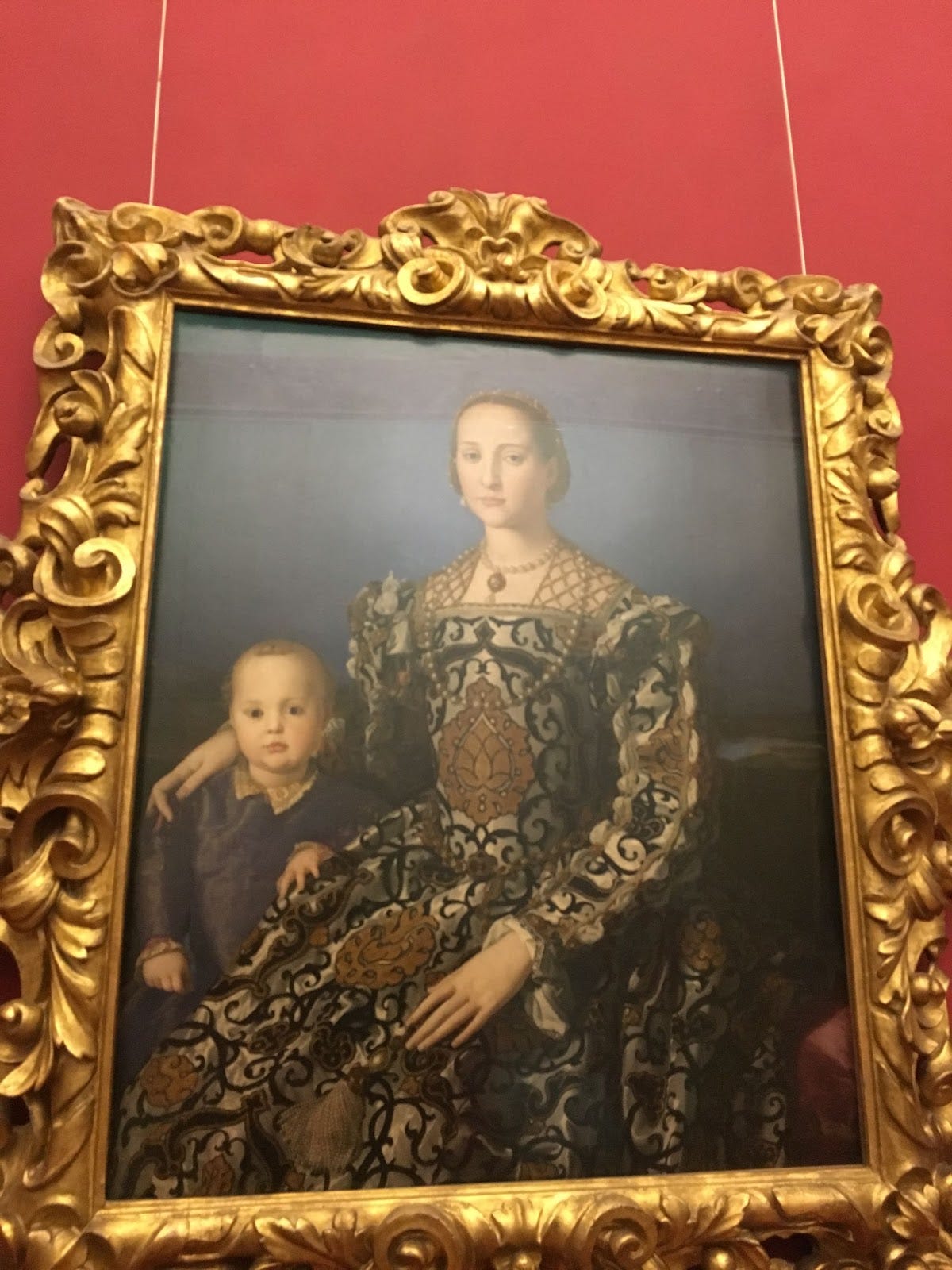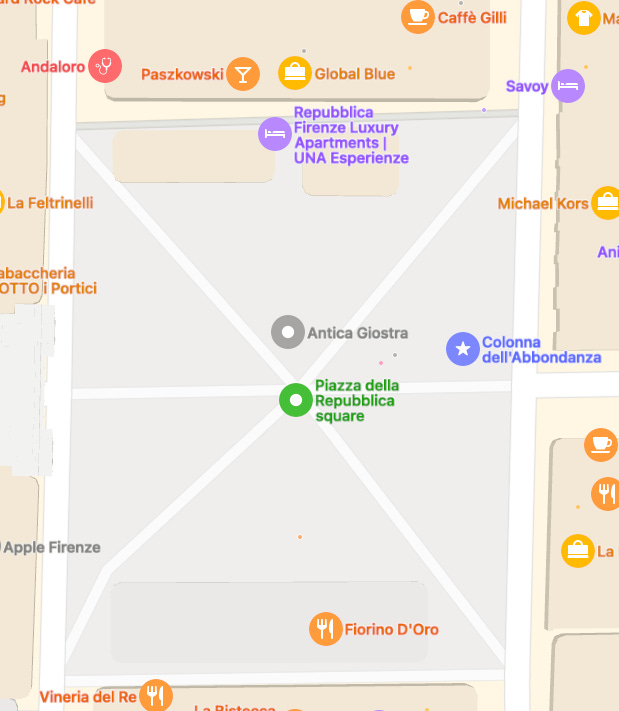Welcome
This week we are off to Florence in Italy.
When you travel, there will be cities that take your breath away and for me Florence is one of them! We have been twice and it truly is an incredible place, especially if you love history.
To round off our ‘Palaces’ theme for September, we will explore Palazzo Pitti or Pitti Palace in English.
I’ll also show you our favourite restaurant in Florence, an amazing place to stay and check in on a recent event at Versailles.
This issue of Traveling Through History is #17. Publishing this many weekly editions puts me in the Top 15% of all newsletter producers on Substack.
Next year I will be adding a special section for paid subscribers and while this newsletter will always remain free, I ask you to consider becoming one of my patrons and making a donation to support my work.
You can do this monthly, or yearly and how to do that is explained by clicking this button.
Regardless of if you are a free subscriber or you upgrade to pay and support my work, I appreciate all of you who take the time to read my newsletter and love the comments you send me.
Enjoy our trip to Florence this week and Traveling Through History with me.
Michelle
Savvy Travel Historian
September Theme - Palaces
Palazzo Pitti – Pitti Palace - Florence

Background
Palazzo Pitti is located on the southern bank of the Arno River in Florence, Italy, and stands as a testament to the city's rich cultural heritage and the role it played in Italian history, woven with threads of power, art, and the shifting fortunes of noble families such as the Medici’s.
Just a short walk over the Ponte Vecchio Bridge, the Palace and the Boboli Gardens behind are a magnificent way to spend an entire afternoon (or day) in Florence, regardless of which season you visit.

History
The story of the Pitti Palace begins in the 15th century (1458) when Luca Pitti, a Florentine banker and ambitious rival of the ruling Medici family, commissioned the construction of the palace. Supposedly designed by the renowned architect Filippo Brunelleschi (but likely by his pupil Luca Fancelli), the original structure was intended to rival the grandeur of the nearby Medici residence, the Palazzo Vecchio.
Despite owning the palace the shortest amount of time, it still bears Luca’s name.
When Pitti died in 1472 the palace lay abandoned and unfinished but in 1549 Eleonora di Toledo, the wife of Grand Duke Cosimo I de' Medici, purchased it to be used as a ceremonial residence.

[Portrait of Grand Duchess Eleonora of Toledo and her Son Giovanni 1545 ca by Bronzino, Uffizi Gallery, Florence]
Under Medici patronage, the Pitti Palace underwent significant expansions and renovations. Architect Giorgio Vasari, along with Bartolomeo Ammannati, expanded the palace, creating a magnificent residence fit for a grand ducal family. The palace became the primary residence of the Medici, and later, the Habsburg-Lorraine family, who succeeded them.

In the 18th century, the Pitti Palace witnessed another transformative chapter when the ruling Habsburg-Lorraine family decided to convert part of the palace into a public art gallery. The Galleria Palatina, established in the palace, displayed an impressive collection of paintings, sculptures, and decorative arts, showcasing the wealth and taste of its aristocratic owners.
The gallery became a treasure trove of Renaissance and Baroque masterpieces, housing works by artists such as Raphael, Titian, and Rubens.

The Napoleonic era brought further changes to the Pitti Palace as it became a residence for French rulers. During this time, the palace housed Napoleon Bonaparte's sister, Elisa Bonaparte Baciocchi, who ruled over the newly established Principality of Lucca and Piombino.

Following the fall of Napoleon, the Congress of Vienna returned the Pitti Palace to the Habsburg-Lorraine family. With the unification of Italy in the 19thC, Florence became the capital, and the palace served as a royal residence for the Italian monarchy.

In the 20thC, the 140 rooms of the Pitti Palace were divided into several galleries and museums and opened its doors to the public, allowing visitors to marvel at its opulent rooms and priceless art collections. The palace complex expanded to include the Boboli Gardens, a magnificent example of Italian Renaissance gardens, providing a green oasis in the heart of Florence.
Today, the Pitti Palace stands not only as a symbol of Renaissance grandeur but also as a cultural hub that attracts art enthusiasts from around the world, with it being the largest museum complex in Florence.

Its diverse collections, encompassing paintings, sculptures, costumes, and decorative arts, offer a comprehensive journey through the evolution of Florentine and Italian art and history.
Palatine Gallery

The main gallery of the Pitti Palace is the Palatine Gallery. The works in it are displayed as they would have been when it was a private house.
As mentioned it was established in the 19th century by the ruling House of Lorraine, and the gallery boasts a stunning collection of over 500 paintings, predominantly showcasing masterpieces from the Italian Renaissance.
The Palatine Gallery's impressive surroundings, adorned with intricate frescoes and lavish furnishings, provide a fitting backdrop for the exquisite artistic treasures it houses.
Room of Prometheus

One of the 28 rooms in this section of the palace (the Room of Prometheus), contains a large collection of round shaped paintings including Madonna with Child, by Filippino Lippi (1452-1453), shown above the fireplace in the image above, which is one of the most original works on a holy theme from the early Renaissance, showing the Virgin Mary in the foreground. Mary is seated on the throne with Jesus on her knees, in the act of removing seeds from a pomegranate that she holds out to him. Lippi uses this as a symbol of fertility and a premonition of Christ’s Passion.
Imperial and Royal Apartments
The 14 rooms that make up the home for the Medici, Lorraine, grand ducal families and the king of Italy during the period Florence was its capital, occupy a large proportion of the second floor.
The Chapel

Located here, the Chapel is closely linked to the Medici family.
The decoration is mainly of late Baroque style with crimson silk damask wall coverings, with the gold scrolls and mottoes around the room, added in 1685-1687 referring to Ferdinando and his wife, Violante of Baviera.
During Savoy rule, the furnishings were updated to include the table, mirror and clocks seen in the photograph.
The Queen’s Bedroom

Used once as a games room by Ferdinando de’ Medici (1663-1713), it was also used as a bedroom by Queen Margherita of Savoy.
Decorated with deep blue french wallpaper, the 18thC dormeuse (day bed) was made especially for her in 1885.
The kneeling stool on the left, was made in the Ducal workshops between the late 17th and early 18th centuries.
Boboli Gardens

The Boboli Gardens, located behind the Pitti Palace are an impressive example of Italian Renaissance garden design.
Covering over 45,000 square meters, these magnificent gardens were commissioned by the Medici family in the 16thC and have since become one of Florence's most beloved landmarks.

Laid out over a gentle slope, the Boboli Gardens offer a harmonious blend of formal and informal elements, featuring manicured lawns, ornate fountains, and strategically placed sculptures.

One of the defining features of the Boboli Gardens is the Grotta del Buontalenti, a remarkable grotto designed by Bernardo Buontalenti in the late 16th century. This cave-like structure is adorned with stalactites, shells, and sculptures, creating a magical atmosphere that transports visitors to a different world.

As you explore the garden's terraced layout, there is a variety of plant life, including centuries-old trees, fragrant flowers, and neatly trimmed hedges.

As well as its botanical beauty, the Boboli Gardens also provide panoramic views of Florence.

The carefully planned pathways and hidden corners are a haven for reflection and relaxation, making it a favourite of locals and tourists alike.

Today, the Boboli Gardens serve as a living testament to the ingenuity of Renaissance landscape architecture and continue to captivate visitors with their timeless beauty and historical significance.

Relevant Travel Information:
Closed on Mondays.
Opened Tuesday-Sunday from 8:15am - 6:30pm.
Information on the Palace and the museums housed there:
https://www.uffizi.it/en/pitti-palace
Tickets:
https://www.uffizi.it/en/tickets
Traveling Through History is a reader-supported publication. To receive new posts and support my work, consider becoming a free or paid subscriber.
Top Destination in Florence -
Piazza della Repubblica
Like any major city with a rich and long history, Florence has an abundance of things to see and do but one of our favourite places to go is Piazza della Repubblica.

One of the main squares of the city, it has been the center of Florence since Roman times.The ‘Column of Abundance’, dating back to 1431 (shown on the other side of the Carousel in the picture below), was where the original Roman forum stood and during medieval times, the area was densely populated with churches, tabernacles and markets.

It was also the site of the Jewish Ghetto, after Cosimo I de’ Medici, ordered them to live there. The medieval look of the square was maintained until the 18thC when the town council decided to ‘clean up’ the square during the period 1885-1895 when Florence was the capital of Italy.
In doing so, much of its history was erased. Originally called Piazza del Mercato Vecchio, it was a hub of activity with many market stalls and traders.

When the ‘upgrade’ was complete it was firstly renamed Piazza Vittorio Emanuele II (after the King) and a giant statue of him on his horse was erected there but has since been moved to the entrance of Cascine Park. It was later named as it is know today.

Two highlights of the Piazza delle Repubblica I’d like to share with you:
Caffè Paszkowski located in the building also occupied by Repubblica Firenze Luxury Apartments.

Caffè Paszkowski
Our favourite place to eat in Florence, that we recommend to everyone we know who goes there, isn’t just about the food but it’s about the location and the best balsamic vinegar you will ever taste in your life!

Considered one of the most famous cafes in Florence, Paszkowski’s was declared a National Monument in 1991 having occupied this site since 1846, though originally called Caffè Centrale.
Its name was changed to Paszkowski in 1903, when the oldest beer brand in Tuscany acquired it and transformed it into a brewery that was a live music venue, for people to come and listen while they drank coffee and ate delicious cakes.

At the beginning of the 20thC it saw literary intellectuals gather there to read, write and discuss works.

It was here that we first tasted and then purchased a Balsamic Vinegar to die for!
Produced by Leonardi Artigiani since 1871 in the Modena region of Italy, this 6 year old version and its 10 year old twin will make any dipping party you have spectacular.
https://www.acetaialeonardi.it/en/vinegar-farmhouse-s1

Relevant Travel Information:
Open daily from 7:30am - 1am, covering breakfast, lunch, dinner and everything in between.!
Repubblica Firenze Luxury Apartments

For our 15th Wedding Anniversary we went to Florence and stayed at the Repubblica Firenze Luxury Apartments, right next door to Paszlowski’s.

Four luxury apartments with views over the Duomo, whilst expensive, has to provide one of the best vistas in Florence.

The building is called Palazzo Levi, named after the banking family who built it at the end of the 19thC, after the square was remodeled.
Our apartment had a terrace (with a viewing platform) which would be amazing for breakfast in the summer but was a bit cold for us on December 29th!

The room is elegantly decorated and has a ‘wellness’ see through shower between the bedroom and the living room.

It was an expensive indulgence but a real treat for us for three nights to celebrate such a special occasion.
As you may remember we went to Paris this year (albeit a bit later) for our 20th Anniversary, which was last December. Not sure how John will be able to top either of those two destinations for our 25th! hehehehe
Relevant Travel Information:
Further information on the apartments and to book, can be found here:
https://www.gruppouna.it/en/esperienze/repubblica-firenze-luxury-apartments
Throwback to Paris…
Remember last month when I showed you Versailles and its famous ‘Hall of Mirrors’?
Last week King Charles and Queen Camilla made an official State Visit to France and were welcomed by President Macron and his wife at the Palace of Versailles.
Here are some photos for you to look at in awe!



The trip was deemed a triumph, especially given recent relations between France and the UK following Brexit.

Michelle is a speaker, author, content marketer, historian and mother of 3 boys.
After 25 years in business and as the ‘Content Marketing Queen’ for the past 12 years, she has helped countless small businesses understand and develop their content strategies and focus on a customer first approach.
Savvy Travel Historian is her passion project, and her weekly newsletter is available on Substack, Paragraph and Mirror. The latter two allows you to collect each Issue as an NFT.
Michelle is co-host of the Web3 By Three Podcast, a weekly show which talks about current stories in the Web3 space and how it applies to B2B marketing, sales and operations. The show is recorded live every Wednesday at 4pm EST/ 9pm UTC on LinkedIn, YouTube & Bolt+.
You can follow Michelle in these places:
Savvy Travel Historian Instagram

